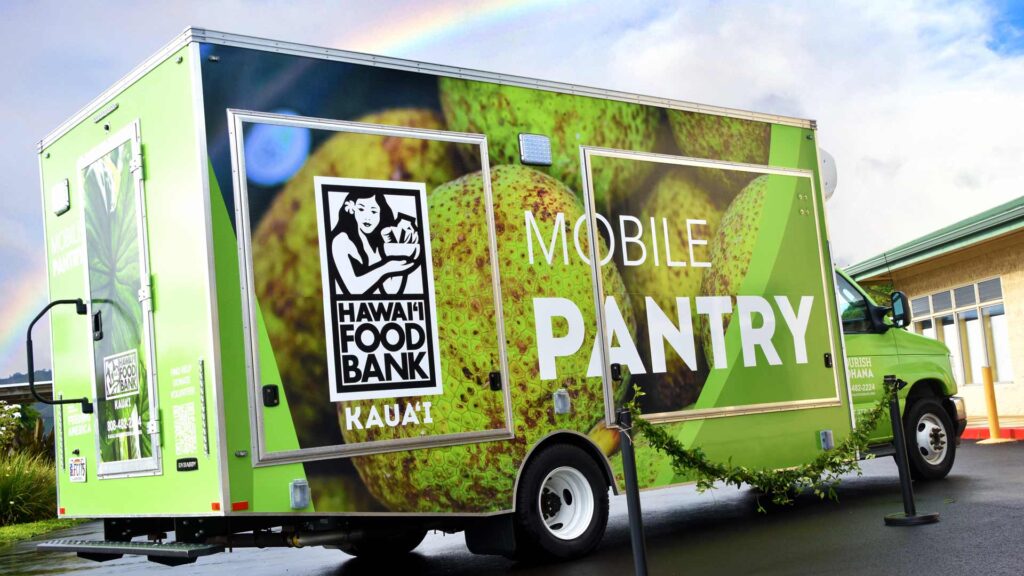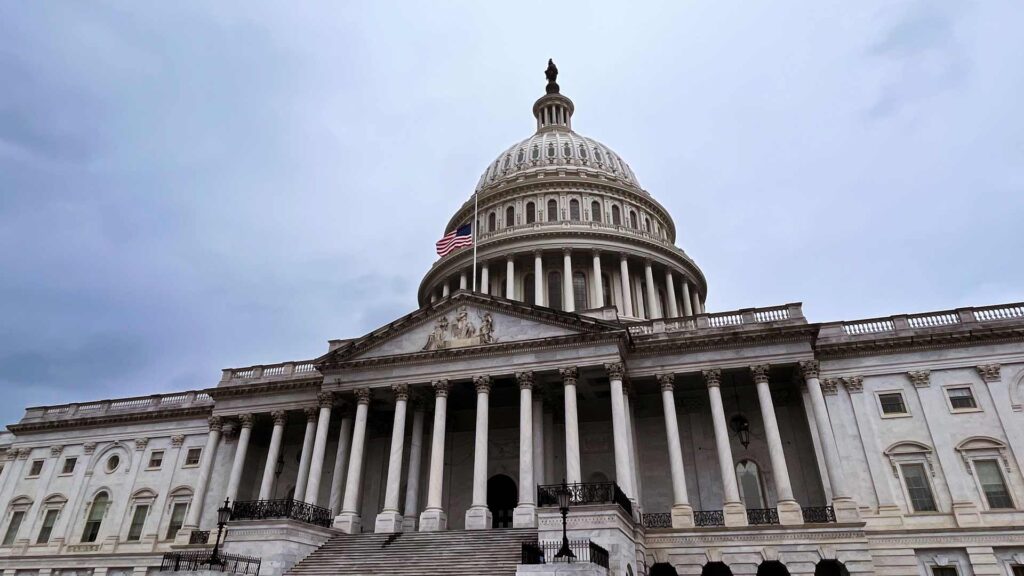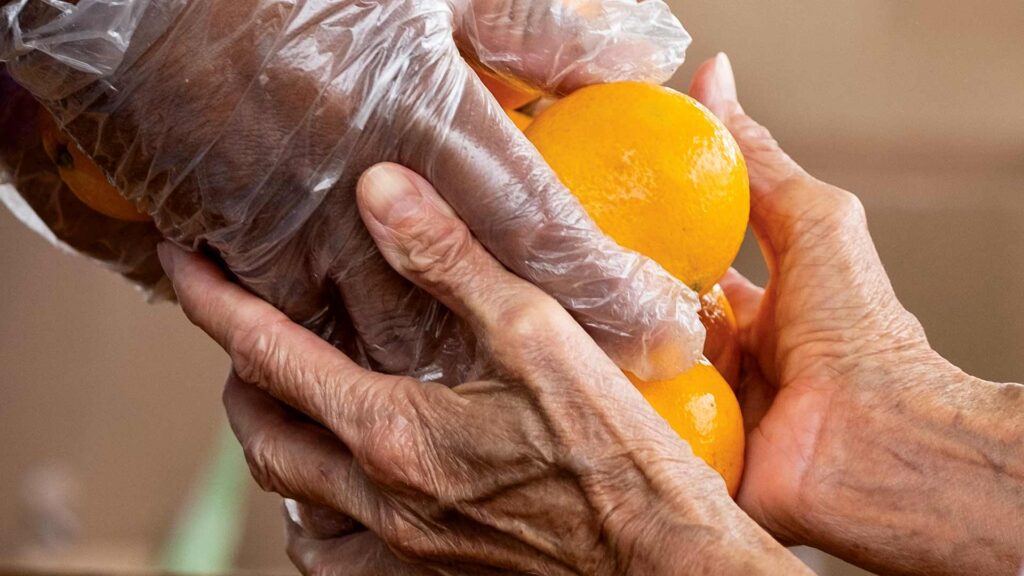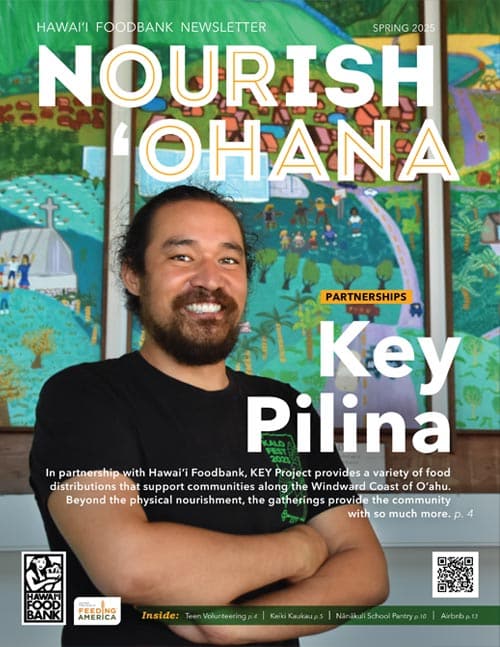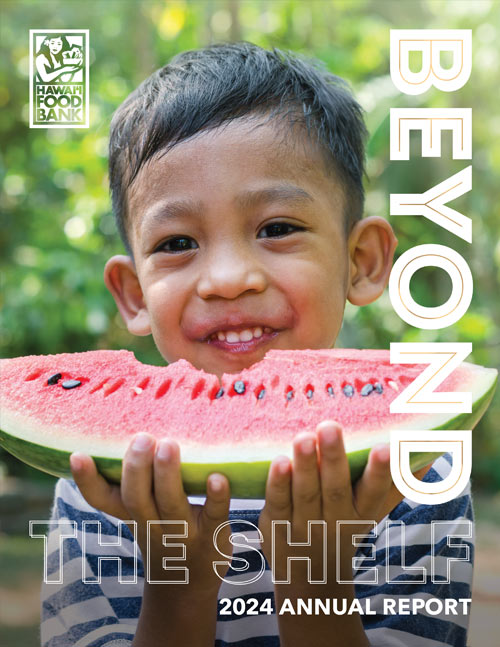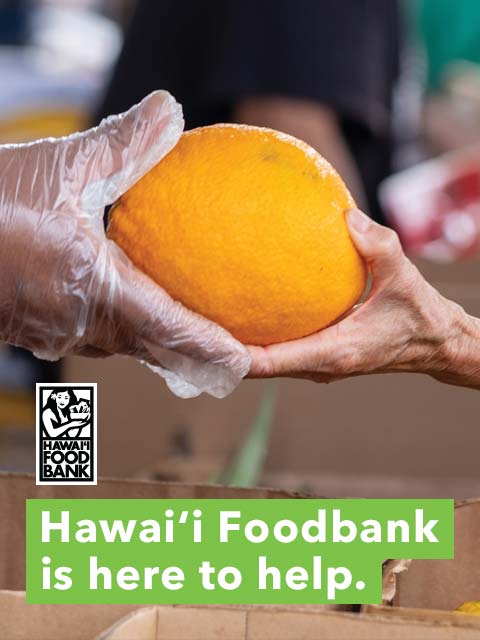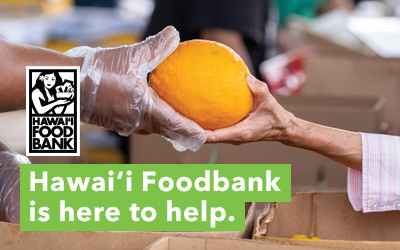Connection to Community: Kaui’s Story
Hawaii Foodbank
Kaui Sana’s connection to ancestry and land is helping to address systemic inequities and develop community-led solutions.
As the first light of day gently crests the velvet green moss rock of the Wai‘anae Mountain Range, the Lualualei Valley is
nearly silent below. Save for a group of friends who link hands in a circle, their native Hawaiian oli drifting past the ancient peaks of Palikea, Pu‘u Kaua and Pu‘ukanehoa to meet the rising sun. Kaui Sana is part of this group, her voice joining the morning chorus.
“It’s called ‘E hō mai,’” she said. “It’s a chant for our team. It’s a chance for our team to focus ourselves, to get a grounding of the work and come in with good intentions and to be ready to deal with food.”
Kaui’s team is the staff at MA‘O Organic Farms, where she is the farm manager. Every day after the oli, her team checks in and determines work for the day. There’s always a lot to do — the farm is 281 acres after all. On that day, romaine heads needed to be picked, a field cleared, green onions harvested and much more.
But for Kaui, farming isn’t just growing food.

Food is a sacred act of resiliency.
– Kaui Sana, Farm Manager at MA‘O Organic Farms
“That connection to the community is a critical part of MA‘O’s mission” she explained. “The farm offers a workforce training program that not only educates youth in agricultural practices, but it also connects students with the history of the land and teaches a respect and communion with the food and its cultural importance to ancient — and modern — Hawaiians, including Kaui.
“Being able to be on the land, to touch soil, to sweat and be in that kind of environment really started to shape me in getting that connection to food,” she said.”
Kaui graduated from the second class of the program years ago. With the program’s help, she was able to attend college — the first of her seven siblings to do so.
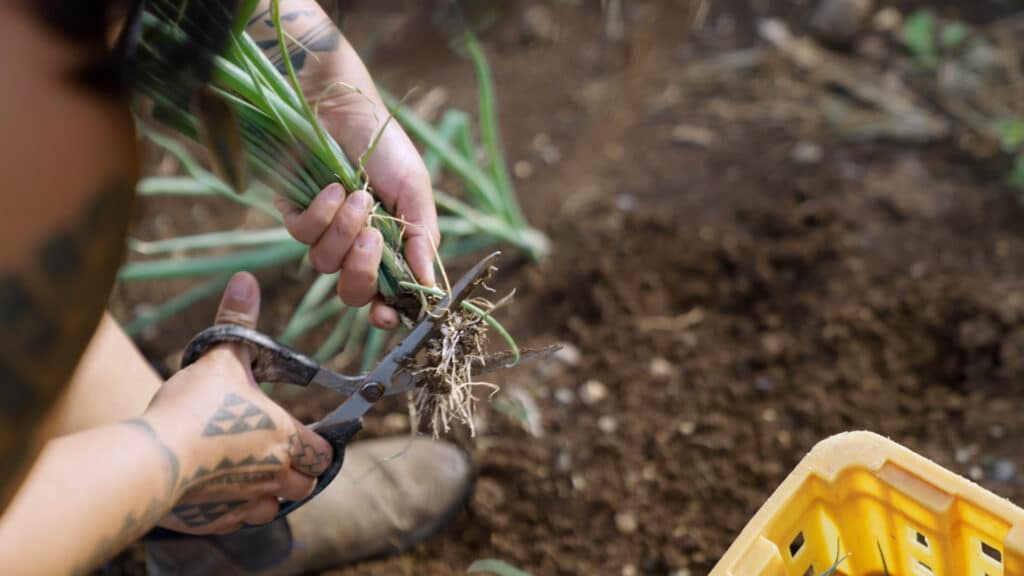

Now, as farm manager, Kaui is helping steward a new cohort of students through the program. And on that sunny morning, they were picking produce, which was going to the Wai‘anae farmers market the next day. “The farmers market has been a critical part of how we connect with this community and how we get our community members fresh, organic produce,” Kaui said.
To that end, MA‘O has partnered with ‘Elepaio Social Services — a Hawai‘i Foodbank agency partner serving the Wai‘anae community — to accept funds from ‘Elepaio’s produce subscription pilot program, which provides participants with $250 per month in credit to spend purchasing fresh fruit and vegetables at the farmers market.
“There are so many challenges that are happening for native Hawaiians,” Kaui said. “Health disparities, educational disparities, social disparities.
And having that connection to the land is important. It’s a big part of being able to push through those challenges.
– Kaui Sana, Farm Manager at MA‘O Organic Farms
MA‘O also provides produce for food distributions that ‘Elepaio and Hawai‘i Foodbank host throughout Wai‘anae — all as part of their journey to recapturing food sovereignty in their community and reconnecting native Hawaiians with the legacy of the land. “Our ancestors managed food,” Kaui said. “They were so in-tune with their elements and their land. They knew how to manage these things — to grow food and to grow people.”

